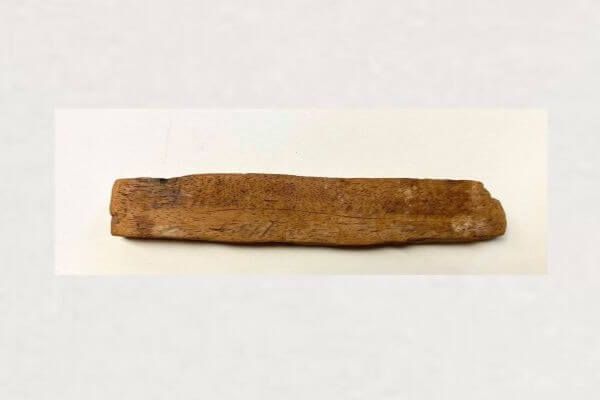Historical Hodgepodge: News from the Saco Museum
 |
|
One of Saco Museum's most interesting artifacts is a piece of wood from George Washington's coffin. COURTESY PHOTO
|
New hours in effect
Effective Thursday, Jan. 23, the Saco Museum at 371 Main St. (next door to Dyer Library), will be open until 8 p.m. on Thursdays, rather than Fridays. As it was on Fridays, admission will be free after 4 p.m. The museum is closed Sunday and Monday; open from noon to 4 p.m. Tuesday, Wednesday and Friday; and 10 a.m. to 4 p.m. Saturday. For more information about the museum, including access to online exhibits, see https://dyerlibrarysacomuseum.org.
Information sought
Museum staffers are seeking information about Coley’s Acres, an African American resort on Portland Road in Saco in the mid-20th century. The resort was listed in the 1960 and 1961 editions of “The Negro Motorist Green-book,” an annual guide for African-American travelers published from 1936-1967. The Green Book became an indispensable guide to travel during the Jim Crow era, when discrimination against African-Americans and other non-whites was widespread and often quite legal. The Guide was designed to identify services and places friendly to African-Americans so they could find safe lodgings, businesses and gas stations that would serve them.
Uncommon Artifact
One of the more unusual objects in the Saco Museum collection is a piece of wood from George Washington’s coffin. As odd as this relic is, fragments of Washington’s coffin are found all over the United States in local museums and personal collections, and often appear in auctions. This piece of mahogany is extremely light and measures about 5 1/2 inches long and an inch wide. An inscription in pencil on one side says “1838”; the writing on the other side is illegible.
After Washington’s death in 1799, his body was placed in a lead-lined mahogany coffin which was surrounded by an outer wooden case covered in black fabric. He was laid to rest in the old family tomb until a new family crypt could be constructed, as Washington had instructed in his will. However, progress on the Washington mausoleum was slow and the new tomb wasn’t completed until 1831. Final construction was spurred on by the large influx of “pilgrims” and random vandalisms that occurred at the Mount Vernon family memorial over the years.
In 1831, George and Martha Washington’s remains were relocated from the old Washington family crypt to a new brick tomb at Mount Vernon. The original tomb was damp and by the time Washington’s body was moved, the outer coffin had deteriorated significantly. John Augustine Washington III (1821-1861), who was the great-grandnephew of George Washington and last private owner of Mount Vernon, broke apart Washington’s deteriorating coffin and distributed the wood pieces as souvenirs to friends and associates of the family.
Finally, in 1837, a marble sarcophagus was erected for Washington and his lead-lined coffin was placed within this new vault, where it remains today.
John Augustine was greatly disturbed by the constant unannounced visitors to the Mount Vernon estate, but the property was lacking in funds and in a state of severe disrepair and he ultimately was forced to make a difficult decision. He reluctantly embraced the idea of transforming Mount Vernon into a tourist destination. Tour boats were eventually allowed to dock at the property and John Augustine sold various souvenirs, including possibly the pieces of the coffin. He sold Mount Vernon to the Mount Vernon Ladies’ Association in 1858 for $200,000. John Augustine was later killed in battle in 1861 while serving under General Robert E. Lee.

